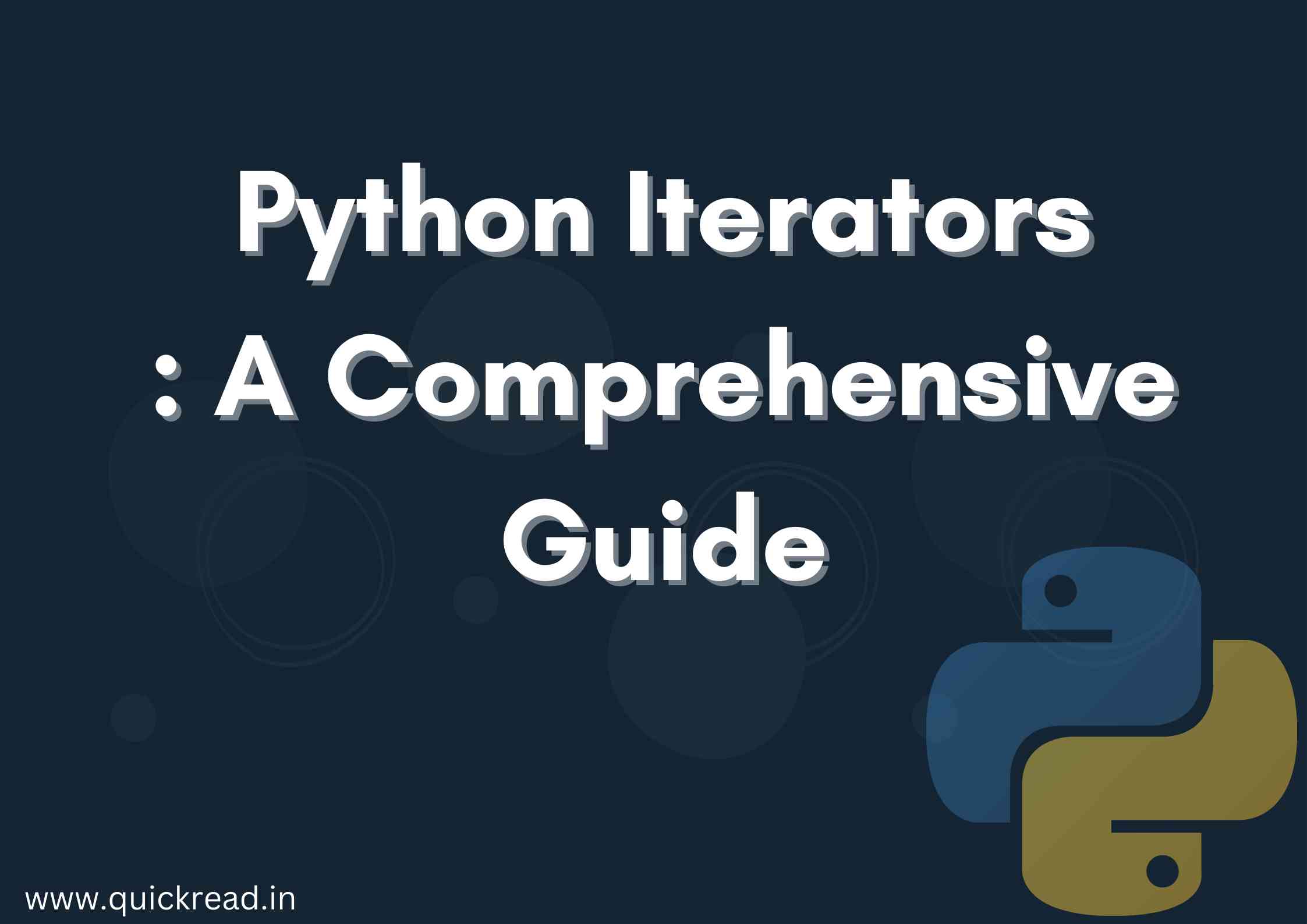Introduction
Iterators are objects that allow traversing through an iterable collection element by element in Python. Mastering iterators is key to fully leveraging Python’s many iterable data types.
In this guide, we’ll cover all aspects of Python iterators including what they are, how they work, built-in iterators, creating custom iterators, and common usage patterns.
What Are Python Iterators?
An iterator is an object that implements two key methods:
__iter__()– Returns the iterator object itself. Called when iteration begins.__next__()– Returns the next value in the sequence. Raises StopIteration when no values left.
Any class that provides these methods is considered an iterator in Python.
When you loop over an iterable collection like a list, internally it calls __iter__() to retrieve an iterator instance. The loop then repeatedly calls __next__() to fetch values until a StopIteration exception is raised.
This protocol allows sequential element access without needing the full collection materialized in memory. Iterators are lazy – values are produced only as requested.
Built-in Python Iterators
Many built-in Python objects implement the iterator protocol:
- Lists, tuples, sets, dictionaries – Containers return iterators when iterated.
- Strings – Each character is returned sequentially.
- Files – Return line by line or byte by byte iterators for reading.
- Generators – Generator functions automatically create iterator instances.
These can directly be used in loops, passed to functions expecting iterators, spread into lists, and more.
Underneath for and while loops call iter() to get an iterator instance from the collection being looped over.
Creating Custom Iterators in python
We can create iterators from scratch by implementing __iter__() and __next__() methods.
For example, here is an iterator representing a range:
class RangeIterator:
def __init__(self, start, end):
self.current = start
self.end = end
def __iter__(self):
return self
def __next__(self):
if self.current >= self.end:
raise StopIteration
value = self.current
self.current += 1
return value
for x in RangeIterator(5, 10):
print(x) # Prints 5, 6, 7, 8, 9This stores the current position and end point. __next__() returns values until the end is reached then raises StopIteration.
Custom iterators give you full control over iteration logic.
Iterating Infinite Sequences
An interesting capability unlocked by iterators is the ability to model infinite sequences.
Normally iteration stops when a collection is exhausted. But with custom iterators, we can implement infinite counters, consts, alternating values, and more:
class InfiniteRepeat:
def __init__(self, value):
self.value = value
def __iter__(self):
return self
def __next__(self):
return self.value
for x in InfiniteRepeat(5):
print(x) # Prints 5 infinitelyThis simple iterator repeatedly returns the same value, supporting endless iteration.
Infinite iterators are useful for streams of data being generated in real-time that have no fixed end.
Iterables vs Iterators in python
In Python, an iterable is any object that can return an iterator via iter(). Lists, tuples, strings are iterables.
An iterator is the actual object that gets returned by iter() and handles iteration logic.
So iterables provide access to iterators. This separation enables many iterable collection types to reuse the same iterator logic underneath.
Iterator Advantages
Iterators provide several advantages:
- Memory efficiency – No need to materialize all data upfront
- Modularity – Separate iteration logic from data source
- Streaming – Support reading data piece by piece from sources like files, sockets
- Laziness – Values computed only when requested
- Infinite data – Iterators allow infinite sequences
Overall iterators enable directly traversing any sequential data source in an efficient, decoupled way.
Iterator Usage Patterns
Some ways iterators are commonly used in Python:
- For loops – Easily loop over any iterator instance directly
- List/tuple conversion – Quickly materialize iterators into concrete collections
- Unpacking – Spread iterator values into variables using unpacking
- Map/filter – Pass iterators to functional helpers like map() and filter()
- Zip – Zip together multiple iterators element by element
- Chaining – Chain together iterators for data pipelines
- Decorators – Write decorators that wrap iterators
Iterators integrate smoothly across Python thanks to their simple interface.
Conclusion
Python Iterators are a foundational component enabling Python’s many lazy, stream-based data types. By learning how to create, use, and chain together iterators you gain mastery over sequential traversals.
Key takeaways include:
- Iterators implement
__iter__and__next__ - Built-in collections can return iterators
- Custom iterators provide control over traversal
- Infinite data streams can be modeled
- Iterators excel at lazy evaluation
Learning iterators unlocks the true power of Python’s iterable data types. Use them as a tool for efficient, elegant data access.
Frequently Asked Questions
Q: Are generators a type of iterator in Python?
A: Yes, generators automatically implement the iterator interface so can be used as iterators.
Q: Can iterators be reused after consuming them once?
A: Unfortunately not – most iterators cannot be reset and reused. You have to obtain a fresh iterator instance again.
Q: Is there a performance impact to using iterators?
A: Minimal – the overhead of lazy iterator access is generally negligible compared to costs of upfront materialization.
Q: What are some signs I should be using an iterator?
A: Use cases like streaming data, infinite sequences, pipelining transformations, and modularizing traversal logic all can benefit from custom iterators.
Q: Can iterators be parallelized in Python?
A: Iterators are inherently sequential. But it’s possible to coordinate multiple iterators in parallel in specialized iterator libraries like Ray.


